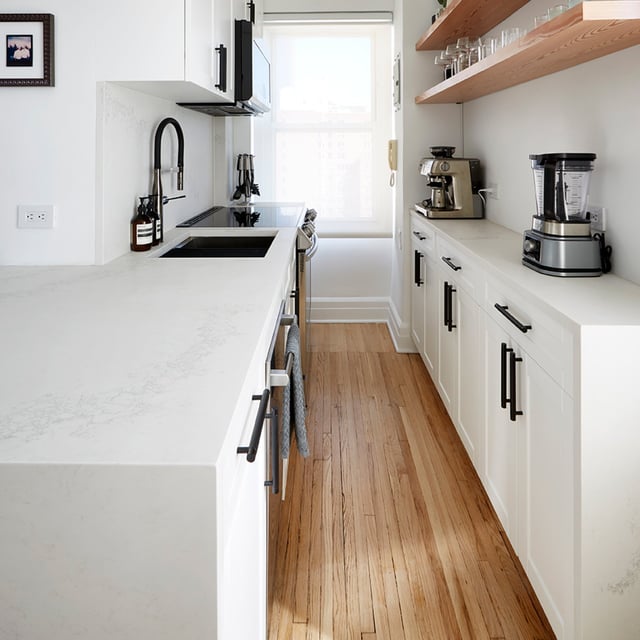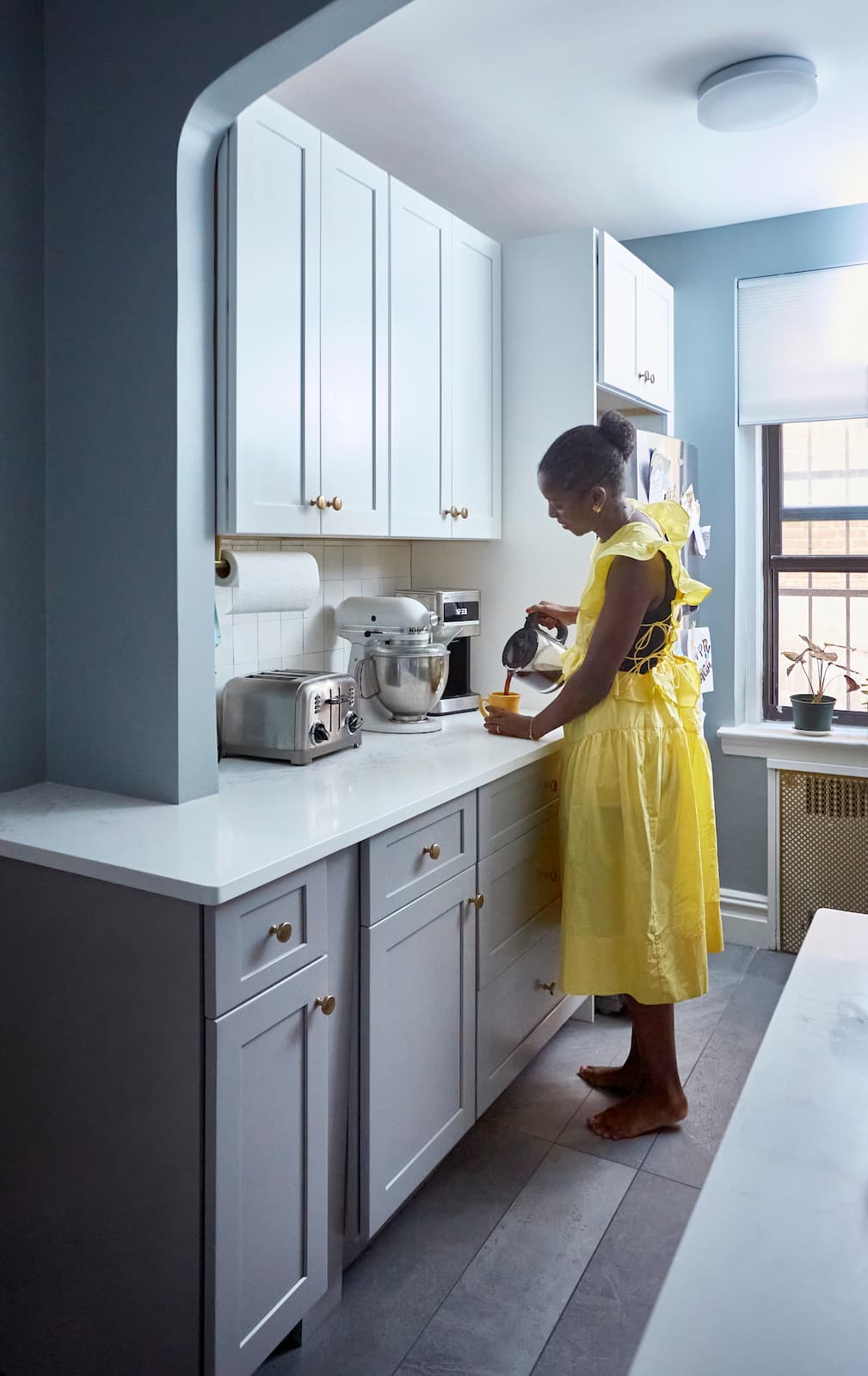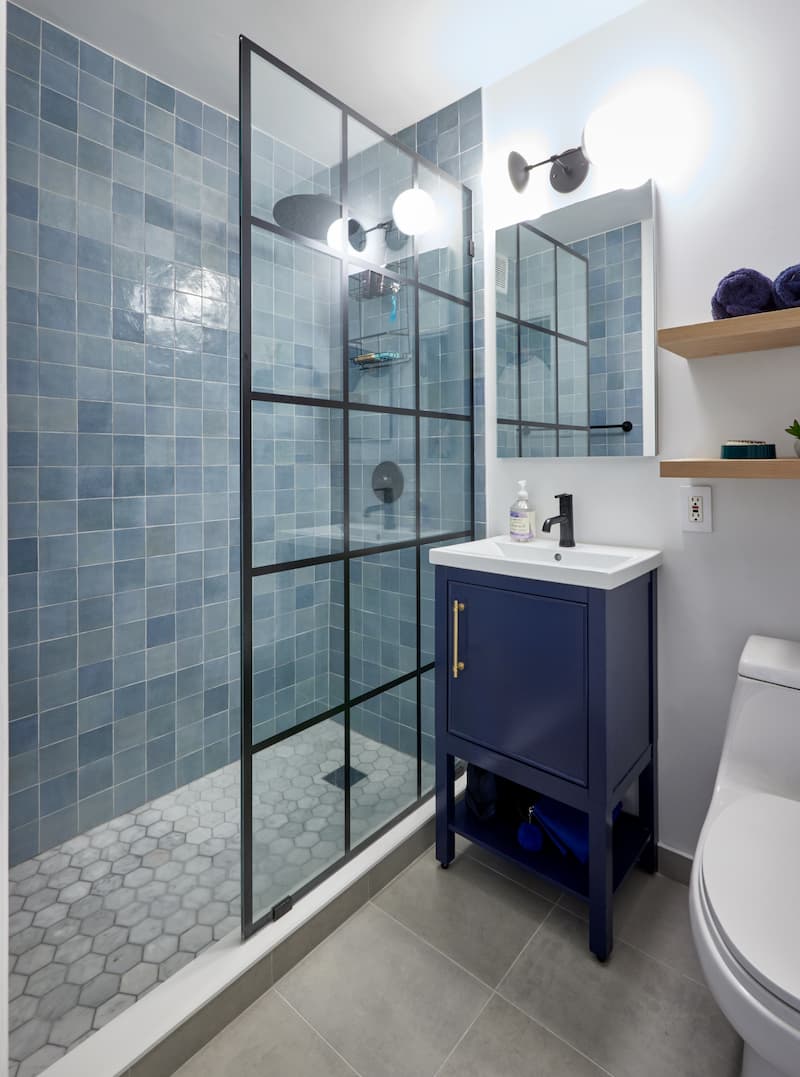Uneven Wooden Floors? Here’s What Leveling Entails

In This Article
There’s a certain charm in the creak of original hardwood—but when your floors start to slope or feel uneven, it’s not just character. It’s a warning sign.
Uneven floors aren’t just a cosmetic issue. They can point to structural wear, moisture damage, or subfloor problems that compromise your home’s integrity. Left unchecked, they can worsen over time—and cost more to fix down the line.
Leveling your floors is about more than restoring aesthetics. It’s about protecting your investment and maintaining a safe, solid foundation. Here’s what to know if your floors are showing signs of age—and how Block Renovation helps homeowners tackle foundational issues with clarity, support, and expert oversight.
Why Repairing Uneven Floorboards is Non-Negotiable
- Uneven floorboards can exacerbate structural issues. When your floors are noticeably uneven, it’s often a sign that something deeper is at play—like shifting joists, foundation settling, or moisture damage. Left unaddressed, these issues can worsen over time, leading to more extensive (and expensive) repairs down the line.
- Uneven floorboards impact resale value. Prospective buyers notice sloping or bouncy floors right away. Even if you’ve grown used to the quirks, uneven floors can raise red flags during inspections, potentially lowering your home’s value or complicating a future sale.
- Dirt and grime are more likely to accumulate. Gaps and dips between boards become magnets for dust, debris, and moisture. Over time, this can lead to stubborn stains, unpleasant odors, and even mold growth—none of which belong in a healthy home.
- Quality of life matters. Living with uneven floors can be frustrating and even unsafe. Tripping hazards, wobbly furniture, and that constant sense of imbalance can chip away at your comfort. Leveling your floors restores not just the look, but the feel of your space—making every step feel right again.
Are There DIY Options for Leveling Wooden Floors?
While it’s tempting to search for a quick DIY fix, leveling wooden floors is rarely a project to tackle solo. The root causes—like structural shifts, water damage, or failing subfloors—require a trained eye and professional tools to diagnose and repair safely. Attempting a patchwork solution can mask deeper problems, and there’s certainly no guarantee that you’ll be able to match the polish and precision of a trained professional. Trusting a licensed contractor ensures the job is done right, protecting both your investment and your home’s long-term health.
Know the Cost Before You Start

Ways Your Contractor May Fix Uneven Wooden Floors
- Subfloor Repair or Replacement: If the subfloor beneath your boards is warped or damaged, your contractor may remove sections to repair or replace it. This restores a stable, level base for your flooring and addresses any hidden moisture or rot issues. Subfloor repairs are crucial because an unstable subfloor can cause new flooring to fail prematurely, leading to squeaks, movement, or visible unevenness. Your contractor will also inspect for signs of pests or mold, ensuring that any underlying problems are resolved before new materials are installed.
- Joist Shimming or Sistering: Sometimes, the joists supporting your floor need reinforcement. Contractors may add shims to level out minor dips, or “sister” new joists alongside old ones to strengthen and realign the structure, especially in older homes. Shimming involves inserting thin, wedge-shaped pieces of wood or composite material to fill gaps and create a level surface. Sistering, on the other hand, provides long-term stability by effectively doubling the strength of weakened joists, which is especially important if your home has experienced settling or structural shifts.
- Self-Leveling Compound: For less severe unevenness, a self-leveling compound can be poured over the subfloor to create a smooth, even surface. This is often used before installing new flooring materials, ensuring a flawless finish. The compound spreads out and fills low spots automatically, hardening into a durable, level base. It’s a quick and efficient solution for minor imperfections, but it’s important to address any underlying structural issues first, as the compound cannot fix deeper problems.
- Full Floorboard Replacement: In cases of extensive damage or wear, replacing the floorboards themselves may be the best option. This allows for a fresh start and the opportunity to upgrade materials or finishes. New floorboards can improve not only the look but also the durability and performance of your floors, especially if you choose modern, engineered options. Your contractor will ensure the new boards are properly acclimated and installed to prevent future warping or gaps.
- Foundation Repair: If the root cause is a shifting or settling foundation, your contractor may recommend foundation work before addressing the floors. This ensures a lasting solution and prevents future issues. Foundation repairs might include stabilizing the soil, installing piers, or reinforcing existing supports, depending on the severity of the problem. Addressing foundation issues first is essential, as any floor repairs made before the foundation is stabilized are likely to be temporary at best.
What to Expect as a Homeowner
How Much Floor Leveling Can Cost
The cost of leveling wooden floors varies widely based on the extent of the issue, the size of the area, and the underlying cause. Minor repairs might start around $1,000–$2,500, while more extensive structural work or full replacements can range from $5,000 to $10,000 or more. Your contractor will provide a detailed scope and transparent pricing so you can make informed decisions with confidence.
How Long Floor Leveling Typically Takes
Most floor leveling projects take anywhere from a few days to two weeks, depending on complexity. Simple subfloor repairs or self-leveling may be completed in a matter of days, while structural fixes or full replacements require more time. Your contractor will outline the timeline and keep you updated at every step, minimizing disruption to your daily life.
Turn your renovation vision into reality
Get matched with trusted contractors and start your renovation today!
Find a Contractor
Consider Combining Leveling With Other Flooring Improvements
If your floors need significant leveling, it’s the perfect opportunity to consider related upgrades, especially if you own an older home that can afford some additional TLC.
Heated Floors
Imagine stepping onto warm floors instead of cold tile on a winter morning. Radiant heat systems make that kind of comfort possible—and they don’t just feel good. When installed beneath new or leveled flooring, they can also improve your home’s energy efficiency. The best time to add heated floors is during a major flooring project, when access is open and disruption is minimal. It’s a long-term upgrade that adds everyday comfort.
Waterproofing Susceptible Areas
If your uneven floors are in moisture-prone spaces like basements, kitchens, or entryways, waterproofing is a smart upgrade. Modern waterproofing membranes and sealants protect your subfloor and floorboards from future water damage, mold, and warping—helping your renovation stand the test of time.
For more insights, read What you Need to Know Before Installing Wood Flooring in a Bathroom.
Soundproofing
If you’ve ever overheard a conversation through the walls—or every footstep from the floor above—you know how much noise can affect your comfort at home. Uneven or aging wooden floors tend to creak and carry sound, which can be especially disruptive in multi-story homes, apartments, or open-concept layouts.
That’s why soundproofing is a smart upgrade to consider during a floor leveling project. When floorboards or subfloors are already exposed, it’s the ideal time to address noise at the source.
Your contractor may suggest solutions like acoustic underlays—thin layers of rubber, cork, or foam installed beneath the flooring to absorb impact and dampen airborne sound. If the subfloor is being opened, sound-dampening insulation (such as mineral wool or fiberglass) can be added between joists to block sound from traveling through the structure. Even small steps, like sealing gaps with acoustic caulk, can help reduce noise transfer.
The payoff is a quieter, more serene space—whether you're working, relaxing, or just trying to enjoy a bit of peace. And because it enhances comfort and adds value, soundproofing is one upgrade that pays off well beyond the construction phase.
For more ideas on how to sound-proof your home, check out Apartment Soundproofing Home Renovations.
Renovate with confidence every step of the way
Step 1: Personalize Your Renovation Plan
Step 2: Receive Quotes from Trusted Contractors
Step 3: Let Us Handle the Project Details

Partner With the Talented Contractors of Block Renovation
Leveling your wooden floors is a big step toward a safer, more beautiful home—and you don’t have to navigate it alone. Block Renovation connects you with vetted, experienced contractors who understand the unique needs of your space. From transparent pricing to expert guidance at every stage, we’re here to help you move forward with clarity and confidence. Ready to take the next step toward fixing uneven flooring? Start your project with Block today and discover what’s possible for your home.

Written by Block Renovation

Renovate confidently with Block
Easily compare quotes from top quality contractors, and get peace of mind with warranty & price protections.
Thousands of homeowners have renovated with Block

4.5 Stars (100+)

4.7 Stars (100+)

4.5 Stars (75+)
Renovate confidently
- Top quality contractors
- Warranty & price protections
- Expert resources

